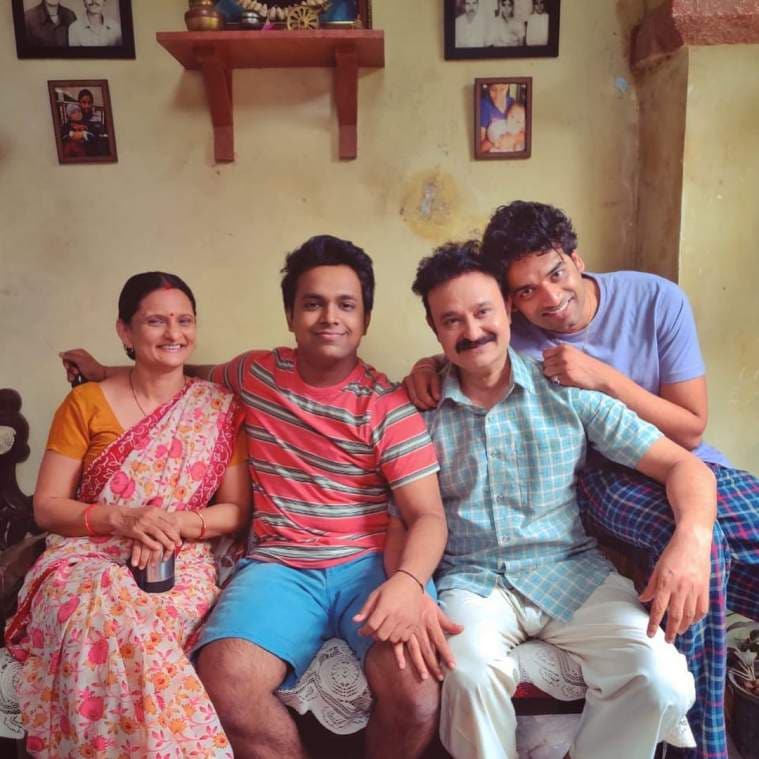[ad_1]
The TVF series for SonyLIV, Gullak 2 narrates the story of an average middle-class household. Like any middle-class family, their house is also managed by a mother who is loud yet loving. Actor Geetanjali Kulkarni who essays the role of Shanti Mishra, feels the housewives in middle-class Indian households “have to be at the top of their voice to be heard by the society and their families which, otherwise takes them for granted.”
After a successful season one, Kulkarni is elated to see a positive response from the critics for Gullak 2. In a conversation with indianexpress.com, Geetanjali spoke about the relatability of the show, playing the role of a housewife and the importance of space while shooting.
Excerpts from the interview:
Gullak is very relatable for any middle-class family. How well could you relate to the show and your character Shanti Mishra?
The situations shown in Gullak are experienced by every middle-class household. Even though I am a Maharashtrian from Mumbai, I have grown up in a middle-class family and I could completely relate to the story, characters, psyche, emotions and the entire setting. The only difference was that the show is set in North India.
How did you bring the nuances to the role of a middle-class housewife?
We have all seen such situations in life. I have grown up in a middle-class family, so I have those traits. The only thing is, I am not just a housemaker. I tend to channelise my feelings through my work as well. But, housewives stay only in one phase and are constantly doing something for others. Most of them don’t even get their due which is probably why they have to be at the top of their voice to be heard by the society and their families since everyone takes them for granted. I am very fortunate to represent such a character because I have received messages saying ‘we could understand our mother better because of your character’. We have to portray such characters so that people empathise with women and the kind of emotions they go through as housemakers, as wives and as mothers.
The last scene of the second episode hits hard for anyone who has closely watched the life of a housewife. How was it for you to portray that?
As a working professional, I hardly face such kind of situation because I earn and spend my own money. But in a patriarchal society, we are programmed in a way that before buying a dress or anything, I consult my husband. I think we should raise women in such a way that they are conditioned to take their own decisions. I like the second episode because Shanti Mishra takes her own decision of buying a mixer, decides its brand and pays for it herself. It’s such a small thing on the surface, but it’s such a big step if looked at in a larger perspective. The scene was so emotional for me that even today while I talk about it, I have tears in my eyes.
 A still from Gullak 2.
A still from Gullak 2.
The show is light-hearted yet, it makes you ponder by the end of an episode. How did you manage to showcase the two emotions: one of a bickering mother and another of a housewife who is finally realising her needs as well?
The whole credit goes to our writer Durgesh who has written it so well. Also, that’s the USP of Gullak. It has all kind of emotions. It’s light-hearted yet has incidents which make you cry. It’s a heartwarming, slice of life kind of a story.
You are a Marathi and the show is set in a town of north India. Was it a challenge for you to get that dialect of Shanti Mishra?
I am not entirely different from Shanti Mishra. Of course, there are some similarities. But I am not shouting at people all the time. (laughs). In this season, I was not worried about the accent because I had practised a lot in the first season.
You had mentioned that the house in which Gullak has been shot was a big element. Can you elaborate on it?
In theatre or the cinema, space is very important because they are a visual medium. If we would have shot this show in some studio, it would have been entirely different. But the house in which we shot it had that warmth. There were challenges to shoot there as there was a crunch of space, but the nostalgic feeling that house had with that smell of the walls and the overall colour palette, clearly helped in our performance. The kitchen was so small that it reminded me of a kitchen in every middle-class household. I believe space gives the artist or an actor the much-needed motivation and helps him to play the situation.
Gullak season one came out in 2019. How was it getting back to the character for this season?
You know what, I remember my dialogues from the first season today as well. When you learn through a process, it really seeps into you and it’s very difficult to forget that. All the characters that I have played until now, some part of them are in me even today. I don’t leave my characters easily and credit for it somewhere goes to my theatre training.
[ad_2]
Source link